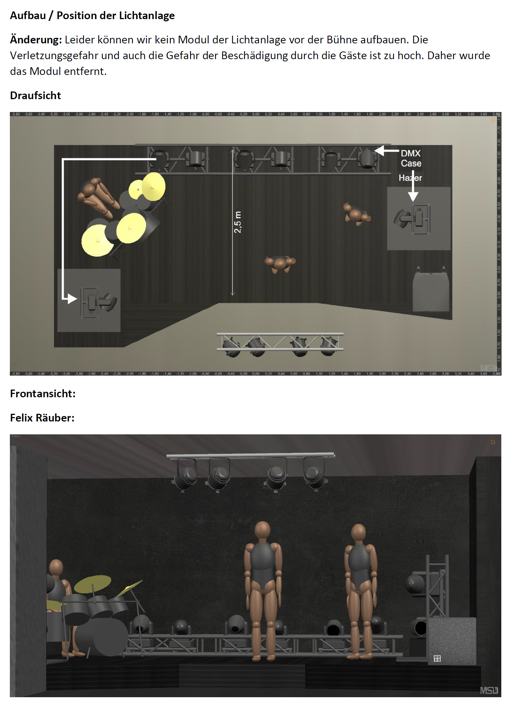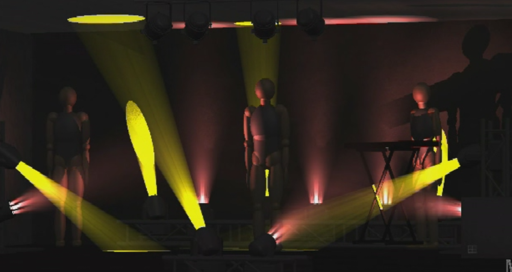Before we agree to use the lighting system, we need to know whether the system fits into the venue and whether it can be operated safely there. We also speak to the artist and, if possible, the organizer before starting any planning. Then a standardized planning process begins.
The aim of the planning process is to obtain a deployment plan or site plan for the event. In this plan, the position and structure of the lighting system is defined, together with the stage positions of the artists on the stage. If possible, we create a stage simulation that also simulates the light rays and effects on the room and the artist. The picture above shows a picture of such a simulation.
In order to be able to produce this simulation or the site plan as precisely as possible, we drive to the concert hall prior to the event by arrangement and look closely at the boundary conditions. In addition to the dimensions of the stage, we also look for power supplies and additional light that we can use. It would be nice if a member of the artist could be there, but it is not mandatory.
After the on-site visit, we will create the assembly and position plan for the system on the stage:
 This page from a site plan from a previous concert shows the very small stage with the truss modules in variant 4a. All modules are set up lying or standing on the floor.
This page from a site plan from a previous concert shows the very small stage with the truss modules in variant 4a. All modules are set up lying or standing on the floor.
Together with the concert venue, the organizer and the artist, we are changing the schedule for the day of the concert so that we have enough time to set up and dismantle the system. At the end, everyone involved receives a copy of the plan and can communicate any changes they want. Ultimately, this creates a site plan that sets the day for all parties so that there is as little stress as possible.
It takes an average of 45 minutes to set up. The lighting system should be set up without interference from the artist. After the construction, no other lighting technician disturbs the artist in his construction. If an artist is to arrive around 4 p.m., the lighting system should be delivered to the venue by 3 p.m. at the latest. After a concert, another 45 minutes will be needed to dismantle the lighting system. In many cases, however, the dismantling can take place parallel to the dismantling of the artist.
The advantageous construction of the system means that only slightly more production time is required.

